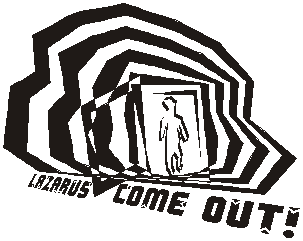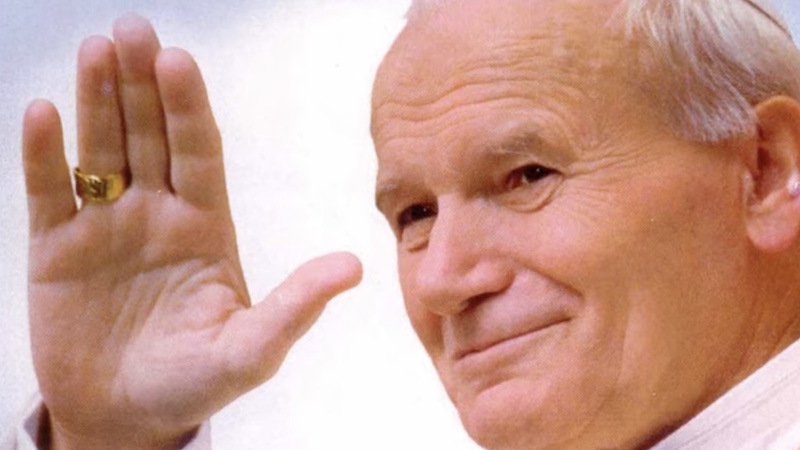Sunday’s Themes
5th Sunday of Lent (A)
5th Sunday of Lent (A)
PODCAST: Courtesy of Fr. Andrew Ricci (Superior, Wisconsin) *
GOSPEL
I am the resurrection and the life

John 11:1-45
- The story of Lazarus is a drama that plays between two understandings of life and death.
- Jesus announces that he himself is the Resurrection. Lazarus, though raised, will die again. This is different from the Resurrection of Christ.
- Lazarus rises again to this present earthly life. This miracle is a sign of the greatest miracle of all, resurrection.
FIRST READING
I will put my spirit in you

Ezekiel 37:12-14
- The reading from Ezekiel is part of a longer vision of the movement from death to new life.
- Ezekiel was preaching to the exiles in Babylon who were convinced that as a people, they were dead.
- Ezekiel understood that the power of life belonged to God alone.
SECOND READING
You are in the Spirit

Romans 8:8-11
- In the second reading, Paul stresses that life in the Spirit is the true life that Jesus came to bring.
- The death of Jesus led to the gift of everlasting life for those who believe in him.
- The Spirit of God, who raised Jesus from the dead, dwells in believers and will also bring their death-bound bodies to life.
SOURCES: Titles and key points courtesy of Our Sunday Visitor; The clipart is from the archive of Father Richard Lonsdale © 2000. The clipart may be freely reproduced in any non-profit publication.
National Shrine Mass
5th Sunday of Lent (A)
Celebrant & Homilist: Rev. Msgr. Charles E. Pope
Guest Choir: Holy Comforter – St. Cyprian Parish Choir, Washington D.C.
Featured OCP Music
5th Sunday of Lent (A)
Related Movie Motifs
5th Sunday of Lent (A)
Film Motifs
Triumph and Restoration
In the movie “Warm Bodies”, the protagonist, R, is a zombie who falls in love with a human, Julie. Through their relationship, R becomes increasingly human again, and eventually, his love brings him back to life, just as Jesus’ love and power bring Lazarus back to life. The ending of the movie has all the Zombies regaining their life, just as the dry bones came back to life in Ezekiel’s vision.
The scene in which Lazarus is raised from the dead can be related to the iconic moment in “The Lion King” when Simba is lifted up in front of Pride Rock after reclaiming his place as the rightful king. Both moments represent a sense of triumph and restoration after a period of darkness and struggle.
The raising of Lazarus can be compared to the pivotal scene in “Harry Potter and the Sorcerer’s Stone” when Harry uses the Philosopher’s Stone to heal Ron after he is poisoned. Both moments are miraculous acts of healing and represent the power of love and friendship to overcome even the darkest of forces.
Bringing Life to a Hopeless Situation
Ezekiel’s vision of dry bones is a famous passage in the book of Ezekiel in the Bible, where the prophet sees a valley of dry bones coming to life through the power of God’s breath. This vision is often interpreted as a symbol of the restoration of Israel and the return of the exiles from Babylon.
Examples include The Hunger Games, The Maze Runner, and The 100. They all depict a world where humanity has suffered devastating losses and faces seemingly insurmountable challenges. However, the characters in these movies refuse to give up and instead work to bring about change and hope for the future. While the movies may not directly reference Ezekiel’s vision, they could potentially be viewed as modern-day depictions of the same idea that God has the power to bring life and hope to a situation that seems dead and hopeless.
Theme of Life and Death
Another movie that might relate to Ezekiel’s vision is “I Am Legend,” where the protagonist, played by Will Smith, is the only survivor in a post-apocalyptic world inhabited by zombies. The zombies in the movie are depicted as lifeless creatures until the very ending. The alternate ending has them come back alive through a cure.
Related Artwork
5th Sunday of Lent (A)

Ezekiel 37: Valley of the Dry Bones (Quilt) – To the left of the prophet Ezekiel are the dry bones. They come together each bone to the next, then muscle, sinew and flesh grow on them, and they return to life. The bones, says God, represent the Israelites, they appear to be down and done for, but “I will bring them back to life, bring them into the land, and they will know that I am God.”

Léon Bonnat (1833–1922) The Resurrection of Lazarus or The Raising of Lazarus 1857
Songs in Popular Culture
5th Sunday of Lent (A)
Come Alive – Lauren Daigle
Lauren Daigle’s song “Come Alive (Dry Bones)” is about the transformational power of God to breathe life into those who are spiritually dead or lost. It evokes the imagery of life coming from death, which is the central theme of the first reading from Ezekiel.
Dry Bones – Gungor
“Dry Bones” by Gungor, is another song that combines the story of Ezekiel’s vision with themes of personal revival and redemption.
Other songs which use the imagery of dry bones coming to life are “Dem Bones”, a traditional African American spiritual, and “Dry Bones” by the Delta Rhythm Boys, with the phrase “Ain’t no grave gonna hold my body down” repeated throughout the song.
Lazarus – David Bowie
The song “Lazarus” is believed to be inspired by Bowie’s own mortality, written during his battle with cancer although it is a song some might find offensive. It portrays a sense of mortality and the afterlife, with Bowie himself playing the role of Lazarus, ready to leave this world behind. It can be interpreted as a powerful meditation on the themes of loss, life, and death, and a poignant commentary on the nature of human existence. Ultimately, whether or not the song is related to the gospel depends on how one chooses to interpret it. The lyrics include
For some this suggests an irreverence or defiance in the face of death. However, others have suggested these lyrics are referencing Jesus’ entrance into Jerusalem. As described in the gospels, Jesus rode into the city on a donkey and was greeted like a king. Lazarus, the narrator, was looking for Jesus in hope of healing before his death. Bowie died only three days after the release of the video.
Ultimately, the connection between the song and the gospel reading lies in the power of resurrection, whether through divine intervention or artistic expression.
Sunday Connections
5th Sunday of Lent (A)
FIRST READING TOPIC INDEX
Liturgical Calendar | Faith & Hope | Family Life | Diversity & Inclusion | Theology of Work | Addiction Recovery | Spiritual Warfare | Stewardship | Youth & Teens | News Events | Church History
SECOND READING TOPIC INDEX
Liturgical Calendar | Faith & Hope | Family Life | Diversity & Inclusion | Theology of Work | Addiction Recovery | Spiritual Warfare | Stewardship | Youth & Teens | News Events | Church History
GOSPEL TOPIC INDEX
Addiction and Recovery | Catholic Apologetics | Church History | Conflict and Violence | Diversity and Inclusion | Family and Children | Moral Theology | Respect for Life | Theology of the Body | Theology of Work | Vocations











